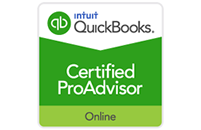Face it: nobody wants to work forever. On average, most people will retire around age 63, yet more than two-thirds of Americans approaching retirement age only have about $30,000 saved – compared to the $1,000,000 that most research indicates people will need to retire comfortably.
So when it comes to running your own small business, one of the best benefits you can offer your employees – and yourself – is an option to put money away for retirement. That’s why today, we’re highlighting a few options and benefits when it comes to offering retirement plans for your employees.
Can I Offer a Retirement Plan?
You may be surprised to learn that whether you are the only one working for your business, or you have dozens of part- and full-time employees, there are absolutely options available for you to offer retirement plans for your staff. Are there expenses associated with offering this benefit to your employees? Probably, whether those costs come in the form of fees or management. But is it worth it? You better believe it. Here’s why:
- A retirement plan is a primo benefit, which can be attractive to potential employees as a reason to come on board, even if you can’t pay them as much as a large company.
- Offering a retirement plan can help both you and your employees secure your financial futures, making long-term employment a more attractive option.
- Many employer-sponsored retirement plans come with tax benefits for the business owner, because your contributions are deductible as a business expense.
What Options Are Available?
There are plenty of different choices available when it comes to offering a retirement plan for your employees – and not all of them are guaranteed to be the right fit for your business. Consulting with a financial advisor and your accountant to discuss the expenses associated with creating a retirement benefit for your employees is always a good place to start.
Once you’ve had that conversation, you’ll probably want to think about a few different options, including:
- Simplified Employee Pension Plan (SEP IRA). This plan is for self-employed individuals and small business owners with any number of employees – contributions to the plan are only made by the employer and are tax deductible.
- Savings Incentive Match Plan for Employees (SIMPLE IRA). Unlike a SEP IRA, a SIMPLE IRA is funded by both employer contributions (tax deductible) and pre-tax employee contributions. These funds are available to businesses with fewer than 100 employees.
- Self-Employed 401(k). These retirement plans are for owners only, and require that the business have no employees that don’t have an ownership interest in the company.
Retirement plans can be complicated, and learning the ins-and-outs can take valuable time away from operating your business, so working with a trusted financial advisor is a smart way to make sure you’re getting the best fit for your business.



